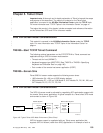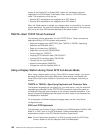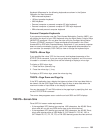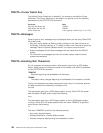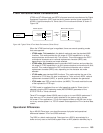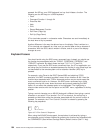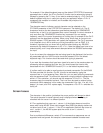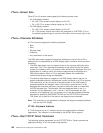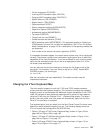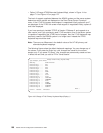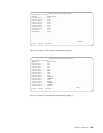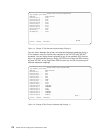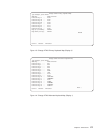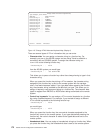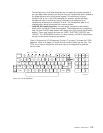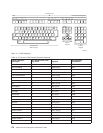v Control characters (CTLCHAR)
v Incoming ASCII translation table (TBLVTIN)
v Outgoing ASCII translation table (TBLVTOUT)
v Special table out (TBLVTDRWO)
v Special table in (TBLVTDRWI)
v Options selected (VTOPT)
v Display character attributes (DSPCHRATTR)
v Page scroll feature (PAGESCROLL)
v Answerback feature (ANSWERBACK)
v Tab stops (TABSTOP)
v Timeout wait for host (INZWAIT)
v Coded character set identifier (CCSID)
v ASCII operating mode (ASCOPRMOD). This parameter applies to initializing a
VT220 session only and has no effect on negotiations. See “VTxxx Full-Screen
Mode Considerations” on page 163 for a description of the operating modes that
are supported.
v Port number of the remote host server application (PORT)
If unexpected characters appear, the remote server system may not be configured
correctly. Some server systems use a workstation-type system value to define the
capabilities of the client workstation. If you are connected to such a server system,
verify that the workstation-type value is set to an appropriate value for a VTxxx
full-screen mode workstation.
You can also use the
set term
command to change the full-screen mode of the
connection. For example, if you use Telnet to sign on to a RISC System/6000
(RS/6000) system, you should type:
set term=vt100
after the connection has been established. This should correctly map the
unexpected characters.
Changing the VTxxx Keyboard Map
The client session support for both the VT100 and VT220 modes provides a
primary and alternate keyboard mapping. This method of providing the keyboard
mapping is done to accommodate the additional keypad capabilities of the VT220
mode. All changes to these keyboard mappings can be saved for later sessions
using the F6 key from the Change VTxxx ... Keyboard Map display. The data is
saved in the user profile, and once saved will automatically apply the next time
Telnet VTxxx emulation is activated.
The keyboard option that you select from the Send Telnet Control Functions menu
determines which keyboard mapping you use. The following displays show the
VTxxx functions that correspond to the 5250 AID key.
v Option 6 (Change VT100 Primary Keyboard Map), shown in Figure 108 on
page 168 and Figure 109 on page 169.
v Option 7 (Change VT100 Alternate Keyboard Map), shown in Figure 110 on
page 169 and Figure 111 on page 170.
v Option 8 (Change VT220 Primary Keyboard Map), shown in Figure 112 on
page 170 and Figure 113 on page 171.
Chapter 5. Telnet Client 167



